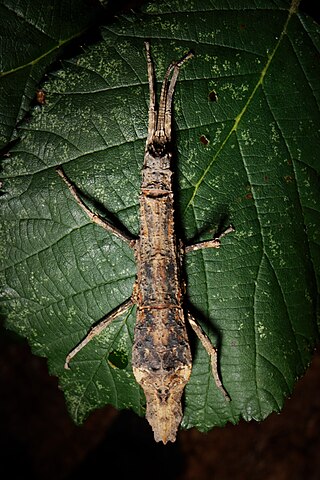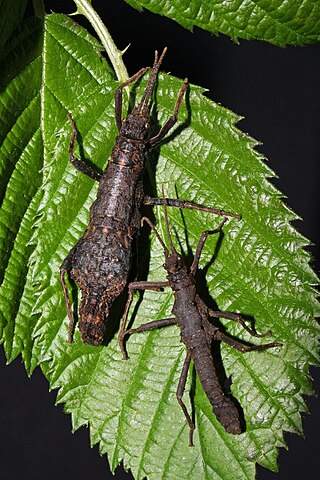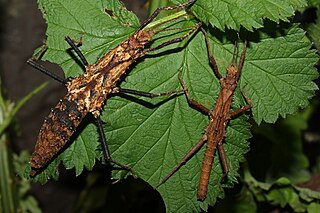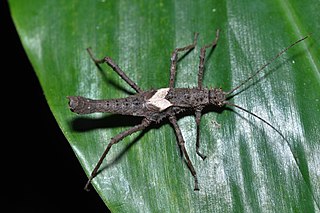
Orestes dittmari is a species of stick insects in the subfamily Dataminae.

Pylaemenes elenamikhailorum is a species of stick insects native in Sepilok on Borneo. In application of the more recent differentiation between the genera Pylaemenes and Orestes the species is sometimes also called Orestes elenamikhailorum.
Orestes diabolicus is a species of stick insects native in Vietnam. The species is so far only known from a three males.
Orestes botot is a species of stick insects native in Vietnam.

Dares murudensis is a relatively small species of stick insect. Like most other members of the genus Dares, the species is native to Borneo.

Dares philippinensis is a species of stick insects. This species is not native to Borneo like most other members of the genus Dares, but to the Philippine island Palawan.

Dares verrucosus is a species of stick insects. Like most other members of the genus Dares, the species is native to Borneo, more precisely in the north of the island.

Dares validispinus is a species of stick insects. Like most other members of the genus Dares, the species is native to Borneo, more precisely in the northwest of the island.

Dares ulula is a species of stick insects. Like most other members of the genus Dares, the species is native to Borneo, more precisely in the northwest of the island. The males are extremely prickly even for the representatives of the genus Orestes. Females are colored with a relatively high contrast.
Trachyaretaon gatla is a species of Phasmatodea native to the Philippine island Palawan.

Tisamenus serratorius is a stick insect species that occurs on the Philippine island Luzon.

Tisamenus deplanatus is a stick insect species native to the Philippine islands Luzon and Mindanao occurs.
Orestes ziegleri is a species of stick insect native to Thailand.

Pylaemenes konchurangensis is a species of stick insects native in Vietnam. The species has been described in the genus Pylaemenes, but from its morphological characters it belongs in the genus Orestes.

Microrestes robustus is a stick insect species native to northwestern Vietnam.

Haaniella parva is a species of stick insect from the subfamily Heteropteryginae and belongs to the representatives of the genus Haaniella native to Sumatra. It is their smallest representative.

Tisamenus ranarius is a stick insect species (Phasmatodea), in the family of the Heteropterygidae native to the Philippines.

Tisamenus lachesis is a stick insect species (Phasmatodea), in the family of the Heteropterygidae endemic to the Philippine Polillo Island.
Tisamenus cervicornis is a stick insect species (Phasmatodea), in the family of the Heteropterygidae endemic to the Philippine island Luzon in the province of Camarines Sur.

Eubulides timog is a stick insect species from the family of the Heteropterygidae. Although only described in 2023, this species, native to the south and east of the Philippine island Luzón, has been kept and bred in the terrariums of enthusiasts since 2009.















